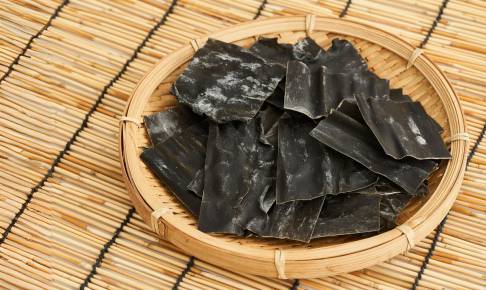Russia-China trade is stalled by food safety issues
China and Russia are on a fast track to ramp up food trade, but several food safety issues must be solved first.
Russia is eager to partially replace US products in the Chinese food market, but ongoing food safety disagreements remain a stumbling block for export growth. During the first ten months of 2020, Russia exported 3.7 million tonnes of food to China, 32% more than the same period the previous year. In monetary terms, the goods totaled USD 3.2 billion, a year-over-year increase of 24%, the Russian Agricultural Ministry estimated. This export growth is being driven by many commodities, but primarily by meat and oil. For instance, sunflower oil exports jumped by a factor of 2.2, reaching 629 000 tonnes and accounting for sales of USD 447 million, soybean oil exports increased by 80% to 290 000 tonnes and sales of USD 213 million, and rapeseed oil exports increased by 30% to 205 000 tonnes and sales of USD 179 million, the Ministry estimated. The US-China trade war is one of the reasons for such remarkable growth, a large player in the Russian market stated. "The Chinese [food] market is so big it has enough room for many producers and suppliers, including Russian, and, of course, the trade war is beneficial for us," said Bogdan Grigoryev, general director of the Russian logistics company RusAgroMarket, adding that the Chinese market is not the easiest to deal with when it comes to food regulations. "As of today, in the regulatory field, as it is we have managed to push through to China such products as poultry, beef, several types of dairy products, and meal, which are quite a few. By all means, we are looking forward to [getting a green light to export] pork," he added. Russia began large-scale food export to China in 2015 when the Chinese authorities partly removed a nearly two-decade-long Russian wheat ban that had been introduced following the discovery of stubble smut, a disease caused by Tilletia controversa fungus, in several batches of Russian grain. In the following years, other trade barriers have also been withdrawn. In the next few years, Russia may double or even triple food export to China with additional exports worth USD 4 to 5 billion per year, according to Dmitry Rylko, general director of the Russian Institute for Agricultural Market Studies. The most promising export items are pork, as well as wheat and barley from European Russia, Rylko added, explaining that, currently, China only approves grain imports from Siberia. It is believed that it is only a matter of time before all Russian grain will be greenlit for export to China because food safety standards for Russian grain are now much higher than they were two decades ago. Furthermore, Russia has already been mulling over plans to further tighten control over the quality of exported grain to preserve its status as one of the main grain suppliers on the global market, Russian Agricultural Minister Dmitry Patrushev said earlier this year.Last but not least, facing similar problems in their relationships with Western countries, Russia and China have been strengthening political ties with one other in recent years. According to Russian trade analysts, Russian business could significantly benefit from this trend. "Barley has the greatest export potential among cereals. In theory, we can supply fodder barley for animal feed production, especially considering that China decided to break ties with Australia and ceased buying this crop there," said Andr
Russia is eager to partially replace US products in the Chinese food market, but ongoing food safety disagreements remain a stumbling block for export growth. During the first ten months of 2020, Russia exported 3.7 million tonnes of food to China, 32% more than the same period the previous year. In monetary terms, the goods totaled USD 3.2 billion, a year-over-year increase of 24%, the Russian Agricultural Ministry estimated. This export growth is being driven by many commodities, but primarily by meat and oil. For instance, sunflower oil exports jumped by a factor of 2.2, reaching 629 000 tonnes and accounting for sales of USD 447 million, soybean oil exports increased by 80% to 290 000 tonnes and sales of USD 213 million, and rapeseed oil exports increased by 30% to 205 000 tonnes and sales of USD 179 million, the Ministry estimated. The US-China trade war is one of the reasons for such remarkable growth, a large player in the Russian market stated. "The Chinese [food] market is so big it has enough room for many producers and suppliers, including Russian, and, of course, the trade war is beneficial for us," said Bogdan Grigoryev, general director of the Russian logistics company RusAgroMarket, adding that the Chinese market is not the easiest to deal with when it comes to food regulations. "As of today, in the regulatory field, as it is we have managed to push through to China such products as poultry, beef, several types of dairy products, and meal, which are quite a few. By all means, we are looking forward to [getting a green light to export] pork," he added. Russia began large-scale food export to China in 2015 when the Chinese authorities partly removed a nearly two-decade-long Russian wheat ban that had been introduced following the discovery of stubble smut, a disease caused by Tilletia controversa fungus, in several batches of Russian grain. In the following years, other trade barriers have also been withdrawn. In the next few years, Russia may double or even triple food export to China with additional exports worth USD 4 to 5 billion per year, according to Dmitry Rylko, general director of the Russian Institute for Agricultural Market Studies. The most promising export items are pork, as well as wheat and barley from European Russia, Rylko added, explaining that, currently, China only approves grain imports from Siberia. It is believed that it is only a matter of time before all Russian grain will be greenlit for export to China because food safety standards for Russian grain are now much higher than they were two decades ago. Furthermore, Russia has already been mulling over plans to further tighten control over the quality of exported grain to preserve its status as one of the main grain suppliers on the global market, Russian Agricultural Minister Dmitry Patrushev said earlier this year.Last but not least, facing similar problems in their relationships with Western countries, Russia and China have been strengthening political ties with one other in recent years. According to Russian trade analysts, Russian business could significantly benefit from this trend. "Barley has the greatest export potential among cereals. In theory, we can supply fodder barley for animal feed production, especially considering that China decided to break ties with Australia and ceased buying this crop there," said Andr
Download content now





















